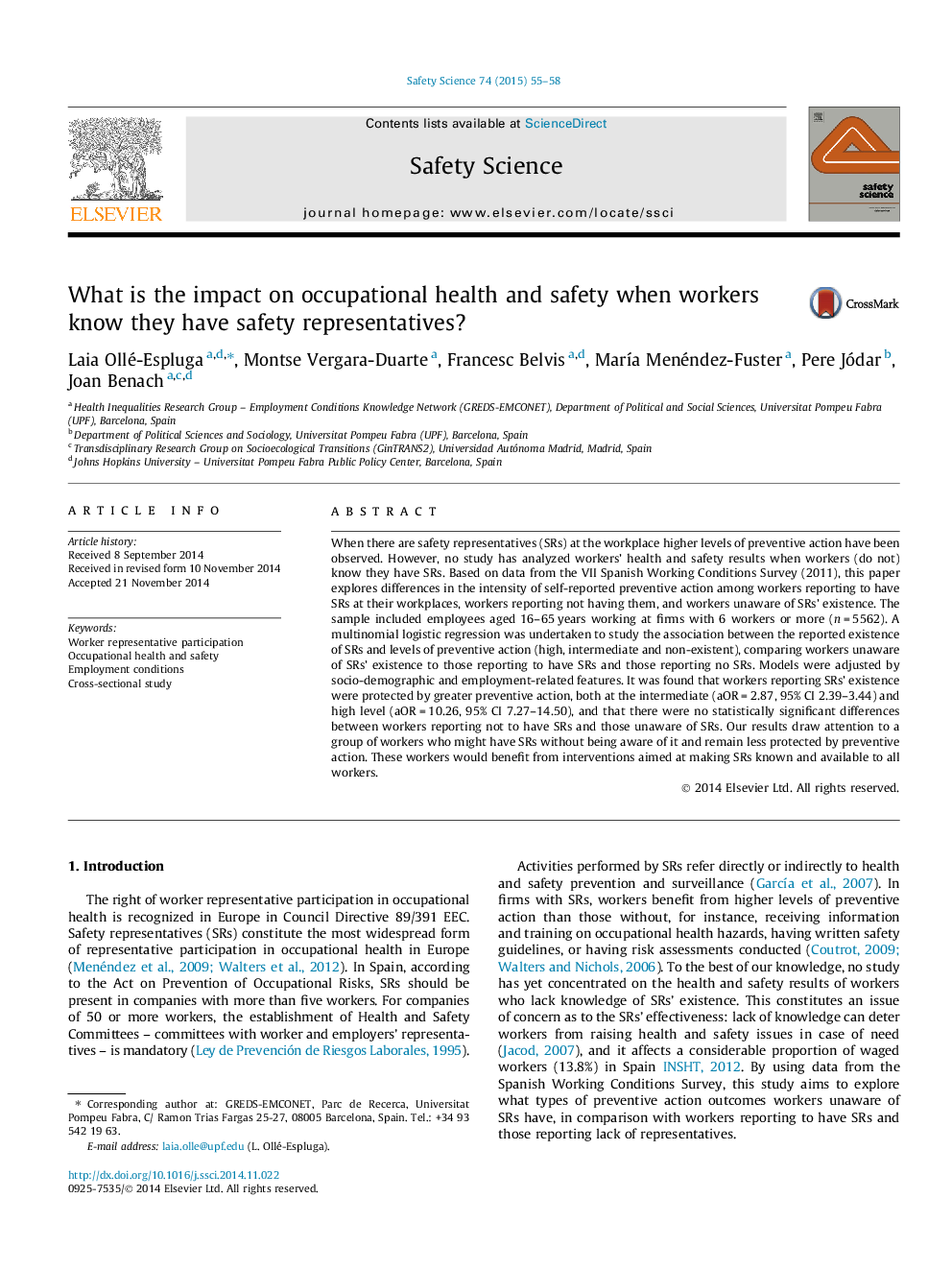| Article ID | Journal | Published Year | Pages | File Type |
|---|---|---|---|---|
| 6975957 | Safety Science | 2015 | 4 Pages |
Abstract
When there are safety representatives (SRs) at the workplace higher levels of preventive action have been observed. However, no study has analyzed workers' health and safety results when workers (do not) know they have SRs. Based on data from the VII Spanish Working Conditions Survey (2011), this paper explores differences in the intensity of self-reported preventive action among workers reporting to have SRs at their workplaces, workers reporting not having them, and workers unaware of SRs' existence. The sample included employees aged 16-65 years working at firms with 6 workers or more (n = 5562). A multinomial logistic regression was undertaken to study the association between the reported existence of SRs and levels of preventive action (high, intermediate and non-existent), comparing workers unaware of SRs' existence to those reporting to have SRs and those reporting no SRs. Models were adjusted by socio-demographic and employment-related features. It was found that workers reporting SRs' existence were protected by greater preventive action, both at the intermediate (aOR = 2.87, 95% CI 2.39-3.44) and high level (aOR = 10.26, 95% CI 7.27-14.50), and that there were no statistically significant differences between workers reporting not to have SRs and those unaware of SRs. Our results draw attention to a group of workers who might have SRs without being aware of it and remain less protected by preventive action. These workers would benefit from interventions aimed at making SRs known and available to all workers.
Related Topics
Physical Sciences and Engineering
Chemical Engineering
Chemical Health and Safety
Authors
Laia Ollé-Espluga, Montse Vergara-Duarte, Francesc Belvis, MarÃa Menéndez-Fuster, Pere Jódar, Joan Benach,
